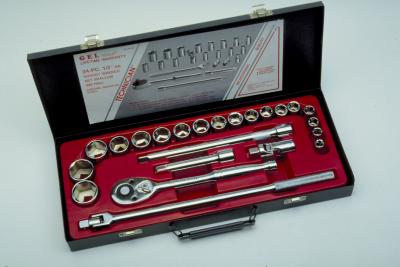
The Jeep 4.0 liter inline six-cylinder engine is probably one of the best recognized Jeep power plants ever used. It was used in many different models, from Wranglers to Grand Cherokees. The design has not changed since 1988 when the 4.0 liter became fuel injected. The thermostat is easy to change and is located right on the front of the cylinder head. The thermostat for the 4.0 liter engine is set to open at 195 degrees and a replacement is available at any auto parts store.
Remove the radiator cap from your Jeep's radiator. Be sure the engine is cool before you begin.
Position the drain pan under the radiator. You will find a drain petcock on the bottom passenger's side of the radiator. Open it and drain the radiator until the coolant level drops below the top radiator hose.
Locate the clamp on the upper radiator hose at the engine end, where it is attached to the thermostat housing. Loosen the clamp and remove the hose from the housing.
Locate and remove the two bolts on either side of the housing using a wrench or socket and ratchet. The housing may come off when the bolts are out but often you have to tap on it with a rubber mallet because the gasket will cause it to stick.
Remove the housing and thermostat from the cylinder head. Clean any remaining gasket material from the housing and cylinder head using a putty knife.
Install the new thermostat and gasket, making sure that the thermostat is oriented the same way the old one came out. If the thermostat is in backward, it will not function properly and the engine will overheat.
Tighten the bolts on the housing using a wrench or socket and ratchet. The bolts should be tight, do not to tighten them so hard that you break the ears off the housing.
Reinstall the upper radiator hose and tighten the clamp using a screwdriver. Replace the coolant in the radiator and install the cap. Test run the engine to verify it is working properly.